Ajax and talents have also been a match made in heaven as the Amsterdam based club are famously known for consistently producing top talents on a regular basis and grooming a lot of their youngsters from the grassroots level to the highest level. In recent years, the likes of Donny Van de Beek, Frenkie De Jong and Mathias de Ligt have also moved to big clubs like Manchester United, Barcelona, etc after impressing for Ajax in their historic 2019 Champions League run where they reached the semi-finals only to lose to Tottenham unfortunately at the final minute.
The next to follow them and graduate from their academy is Dutch U-21 international Noa Lang. Lang. He started his senior level with a bang after scoring an impressive hat-trick on his debut. But since then he has found chances hard to come by and was given very few minutes to prove his worth due to the presence of various other senior players. A loan move to the Belgian club Club Brugge was sealed last October and Noa Lang took this opportunity in both hands to develop into one of the most promising players in Europe. His return of 19 goals and 14 assists from 40 appearances for the Belgian club was amongst the best in the country and Europe.
In this scout report, we will be looking at the strengths and weaknesses of Lang and how well he has developed in his current stint. Let’s begin the analysis.
Player Overview
Phillipe Clement’s tactics mainly involved the use of a 4-2-3-1 / 4-3-3 system where Lang would be deployed in the left wing. Having played in the left wing predominantly in the season, it’s pretty evident from the image below that most of the passes that he receives are on the left side of the pitch. Locations of passes received will give a true nature about a player’s actual positioning on the pitch. We can see a couple of bright yellow spots, one on the very wide left region and the other just outside the half-space. This means that he likes to position himself very wide in most instances to drag the full-back to him and open gaps in the defence. We also see green spots on the right flank indicating that he has also been deployed quite a few times there and about which we will be discussing in detail in this article.
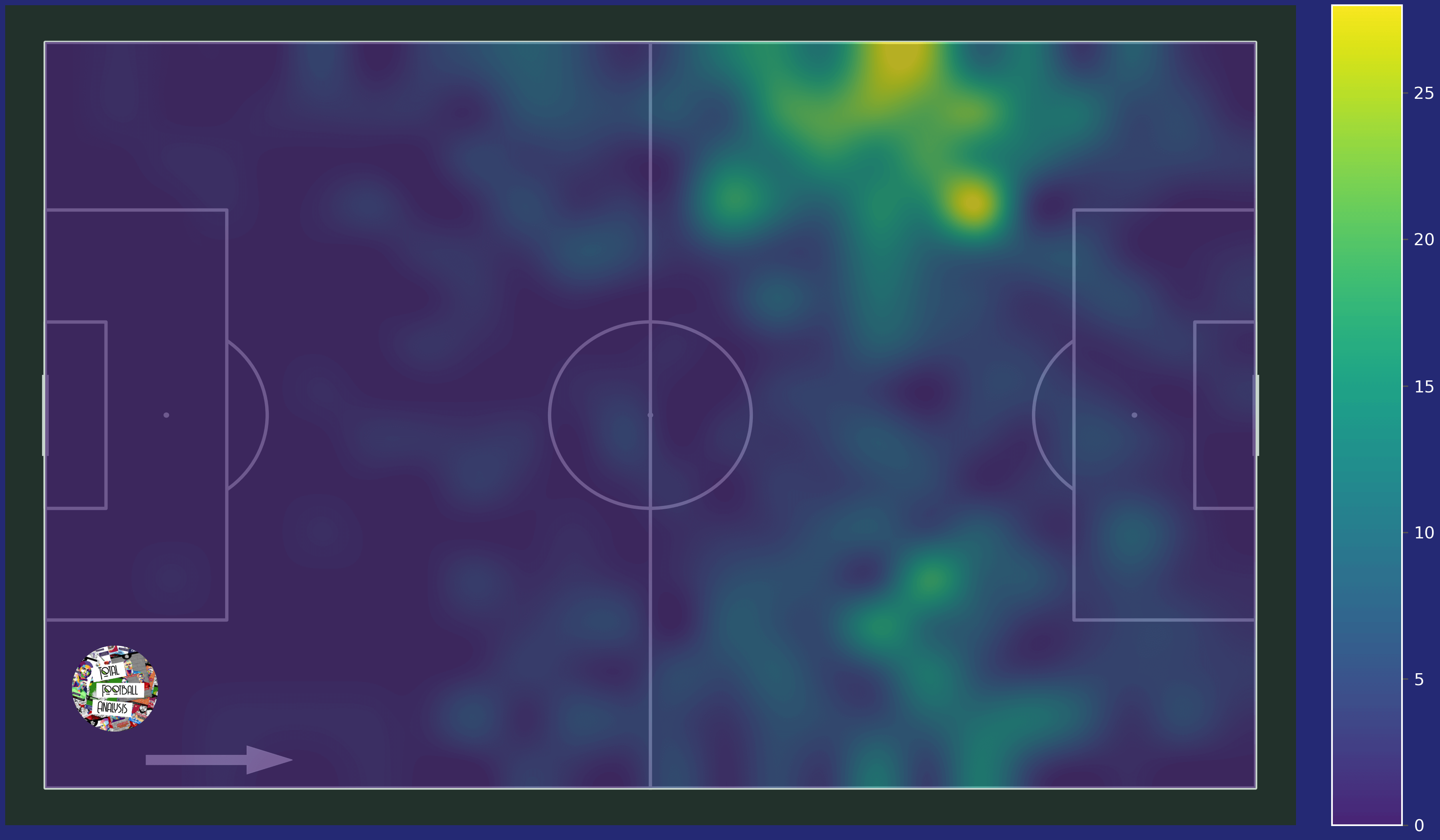
Statistical Analysis
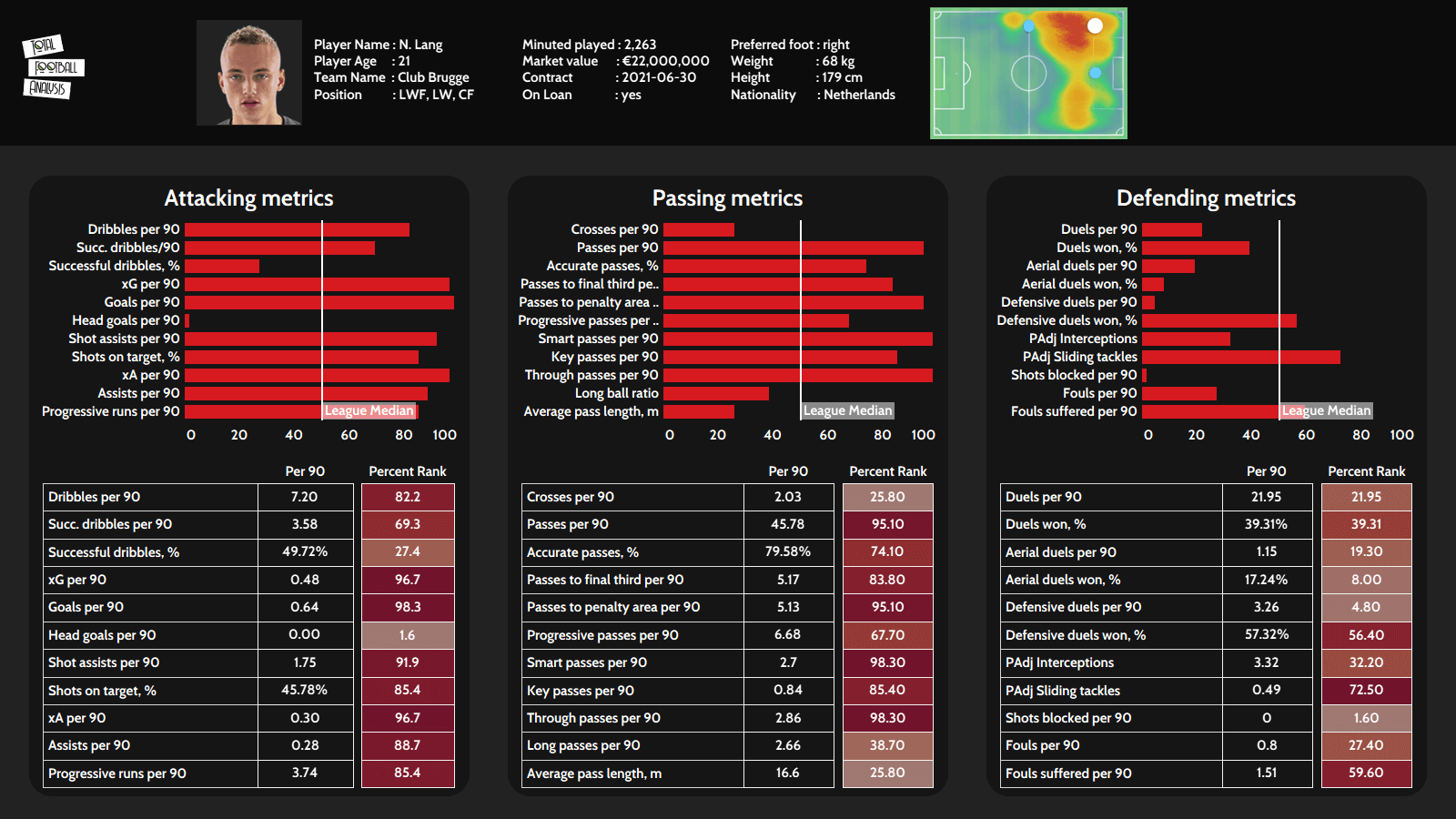
Looking at his statistics in the above image, we can see that he is very good in most of the attacking metrics as well as the passing metrics by ranking among the best in the league in most of the metrics. He averages 0.64 goals per game from an xG of 0.48, both of which are above the 95th percentile in the league. He also creates a good amount of chances for his teammates as his xA per game value of 0.3 is better than 96% of the players in the league while also providing 1.75 shot assists per game. He is also a high volume dribbler as he averages 7.2 dribbles per game with an accuracy of 49.72%.
From his passing metrics, we can also say that he is very good at creating chances for his teammates and also getting himself involved in deeper plays to help his team progress the ball. He averages 5.17 passes into the final third per game as he is among the goto men for his team to move the ball from the middle to the final third. He is also actively involved around the box as he plays 5.13 passes into it and is better than 95% of the players in the league. He has registered 14 assists this season and has deservingly earned most of those assists due to his ability to deliver good final balls where he averages. He has recorded 0.84 key passes, 2.86 through passes and 2.7 smart passes per game, all of them above 85th percentile among the players in the league for the 2020-21 season. This shows that he deservedly earned those 14 assists that he has recorded this season by actively pinging final balls for his teammates. His goal output is among the best in Europe and is probably the best among players in his age group.
Mostly, wingers, these days are expected to make runs in behind the defence by making very good movements to find spaces. With midfielders and even centre-backs expected to be very good on the ball, the role of a winger has changed from being a wide creator to a primary goal-scorer for their team. All the top clubs like Liverpool, Manchester City, etc have such players who excel in scoring as well as creating chances. We looked at the regions where he received the ball from his teammates, now let’s delve deeper into the different types of passes he has received.
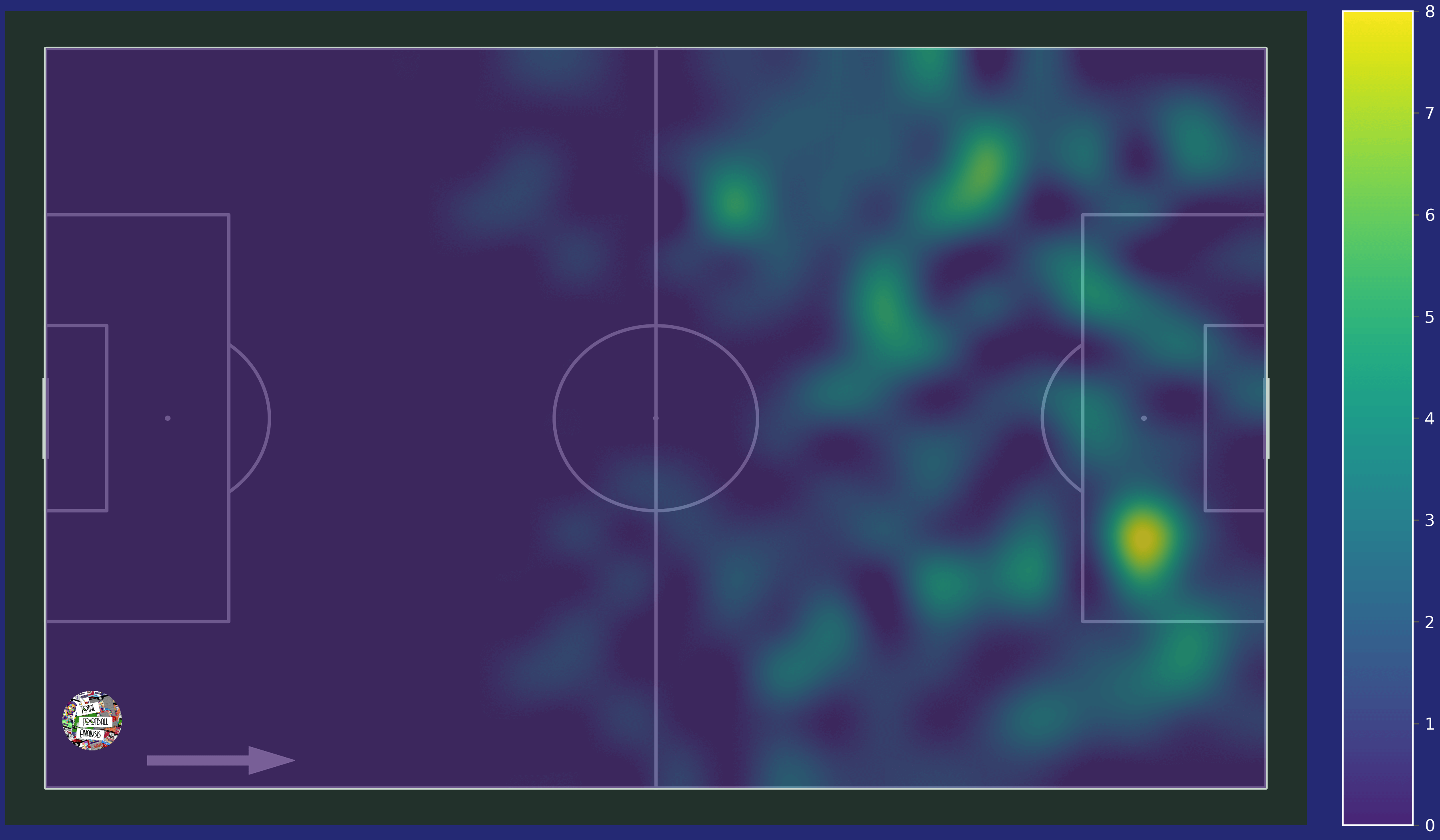
The above image has the locations where he has received progressive passes from his teammates. We can see a bright yellow spot inside the penalty area on the right half-space. Apart from that, we see some green spots in the deeper regions in the left flank while higher up pitch, it’s pretty same on both the flanks. This shows that when he has been deployed in the right-wing he is more inclined towards making movements from the wing and finding spaces in the defence. Also as a natural left-wing right-footed player who likes to cut inside from the flank, he is not given the same luxury to do that so he mostly makes off-the ball movements to disrupt the defence.
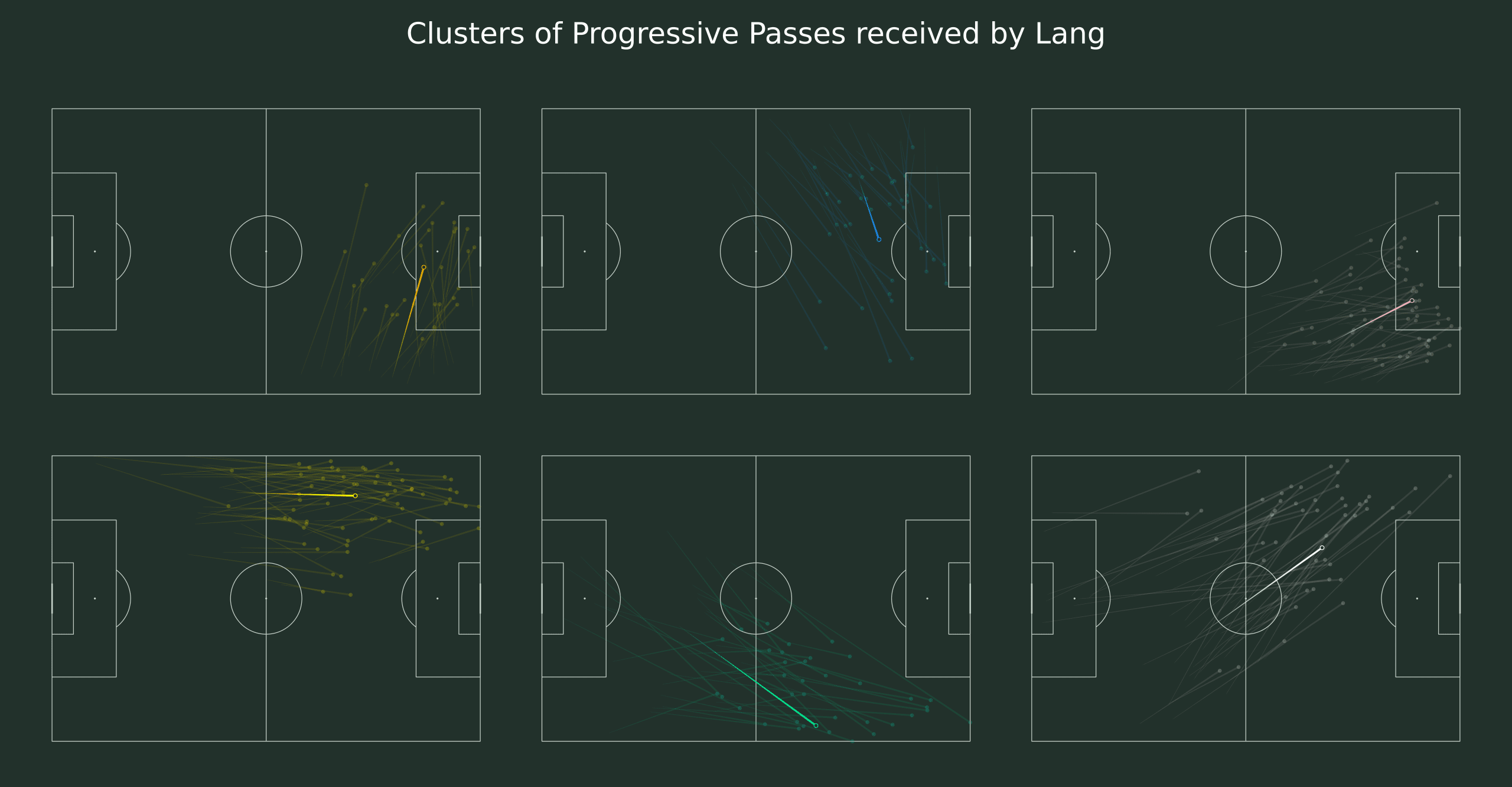
Looking further deeper into the different cluster of progressive passes he receives from his teammates in the above image as they are ranked according to their total threatness posed. We see that the top row consists of two clusters (orange and pink) where he has received most of his passes in the right half-spaces either from a cross higher up the pitch or from deeper regions. The bottom clusters also have similar types of passes but they occur in the opposite flank with switches from the opposite flank commonly seen (white cluster) or floated ball from the full-back (yellow cluster). A thing to be noted here is that a lot of passes have directly come from centre-backs or goal-keepers which means that he is one of the direct options for his team.
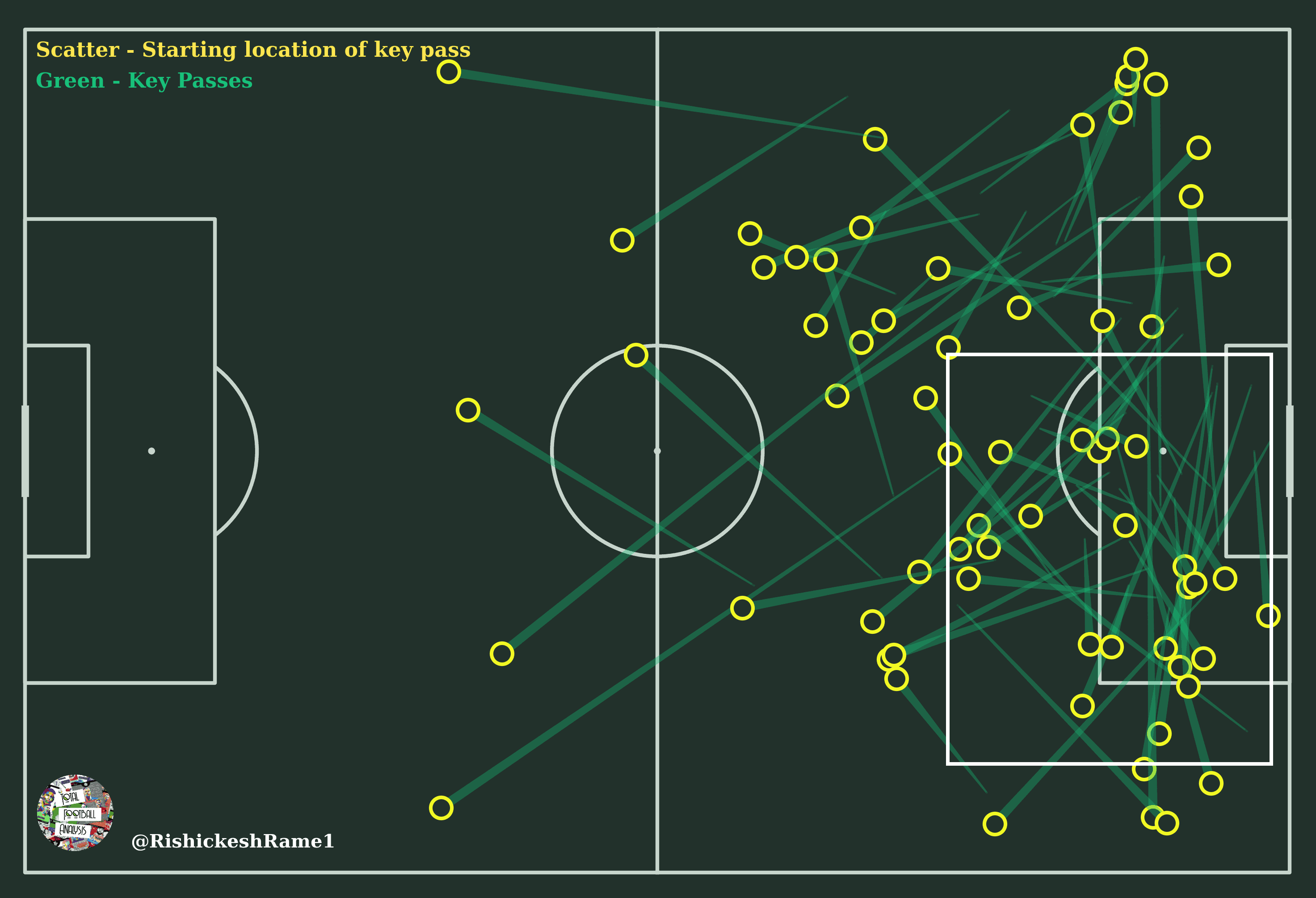
Looking at the key passes (a pass that directly leads to shots) that he has received, most of them have come from the right flank where he receives these balls as cut-backs from his teammates at the centre of the penalty area. Whereas from the left flank there are very few passes that are played to the centre, this means that the passes that he receives from the left flank are mostly very wide and his first instinct after receiving such passes is to take a shot by cutting inside and beating them 1v1. The image below shows the places where he has received a pass before going on to take a shot. A lot of them come in the left-flank and we can see a very good amount of them even in the deeper regions on that flank. Also, another insight we can see here is that even though he receives most of the progressive passes in the right flank, he doesn’t take a shot after receiving those passes which is understandable given that he would have to take with his left foot more often.
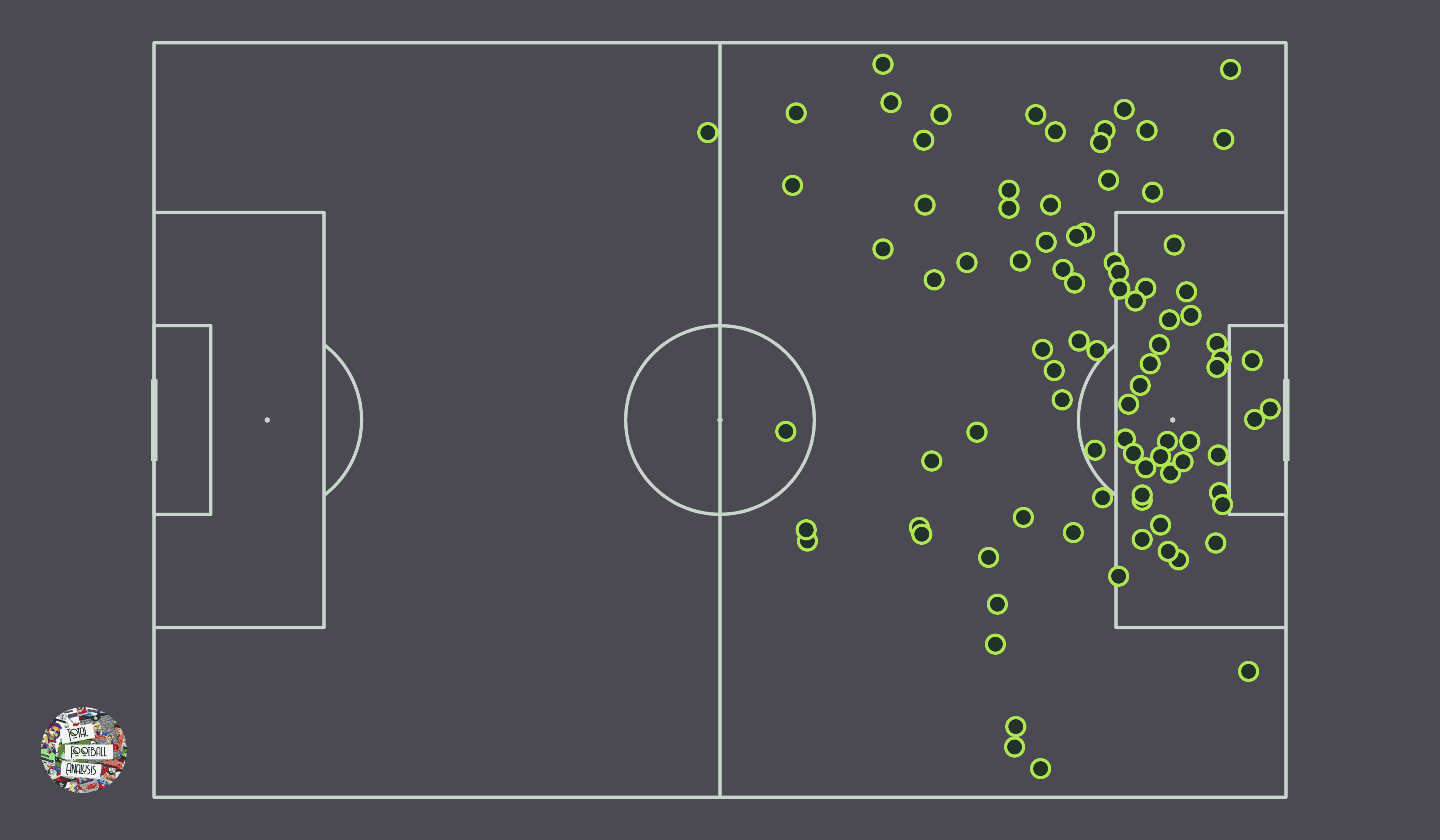
He scored 19 goals from around forty appearances last season. We have already seen that he ranks very high in terms of goal outputs among the forwards in the Belgian league this season. Looking into the regions where he has taken his shots we can see that most of them occurred in the left regions. His goals though majorly come at the central regions (yellow cluster) where the shots are of high xG. Most of his shots from the left regions are sub-optimal shots (less xG), white and orange clusters.
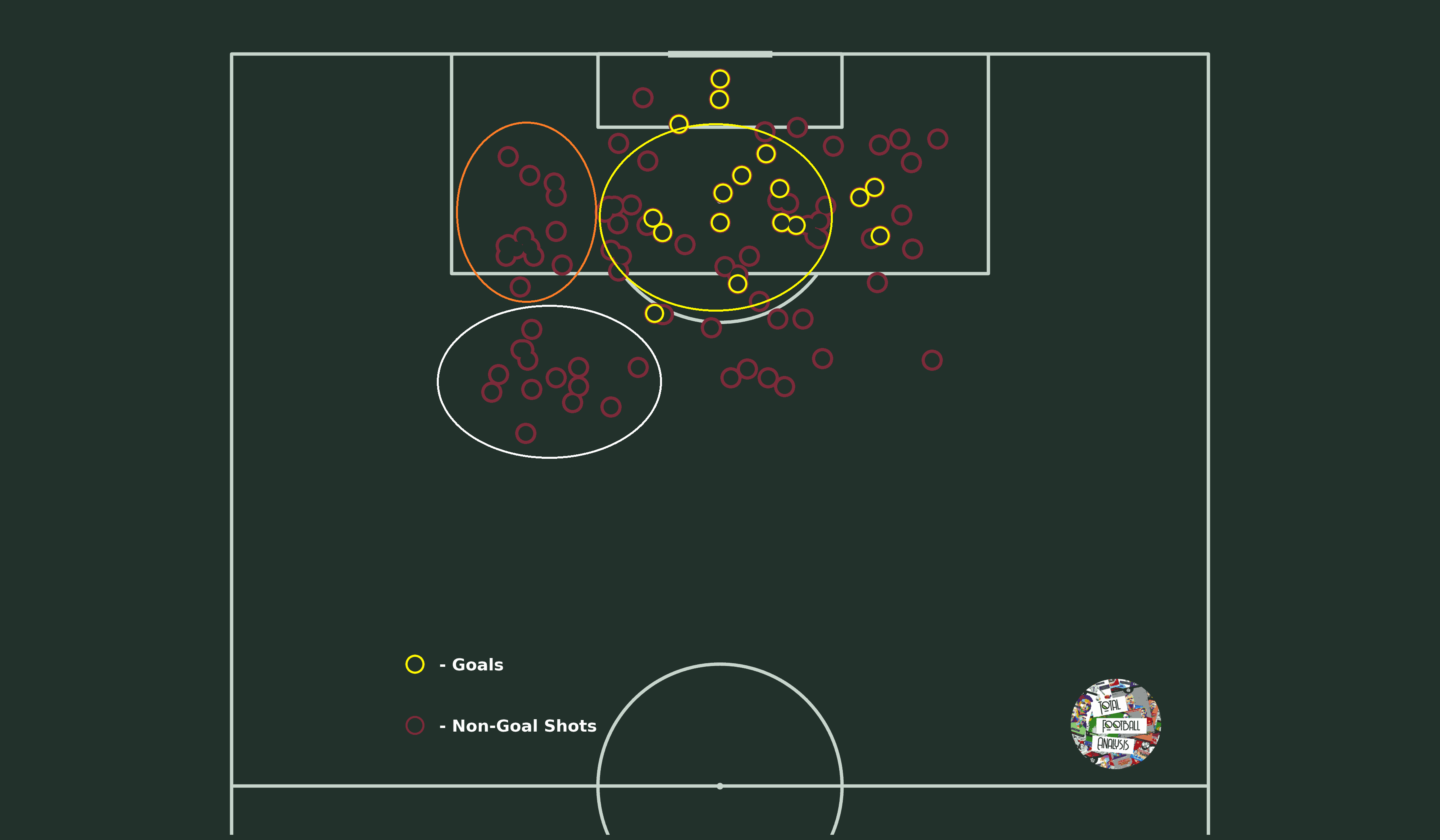
We can tell that he is not someone who is very good at taking long shots and scoring screamers as this is something he needs to work on where he tends to take a lot of these suboptimal shots. We can say that he is an efficient finisher inside the box as he has 19 goals from an xG of 15.5 this season. He is not very bad at cutting inside and scoring a goal though it could be an area where he can improve both his finishing in these situations as well as his decision making to whether to go for a shot or play a simple pass.
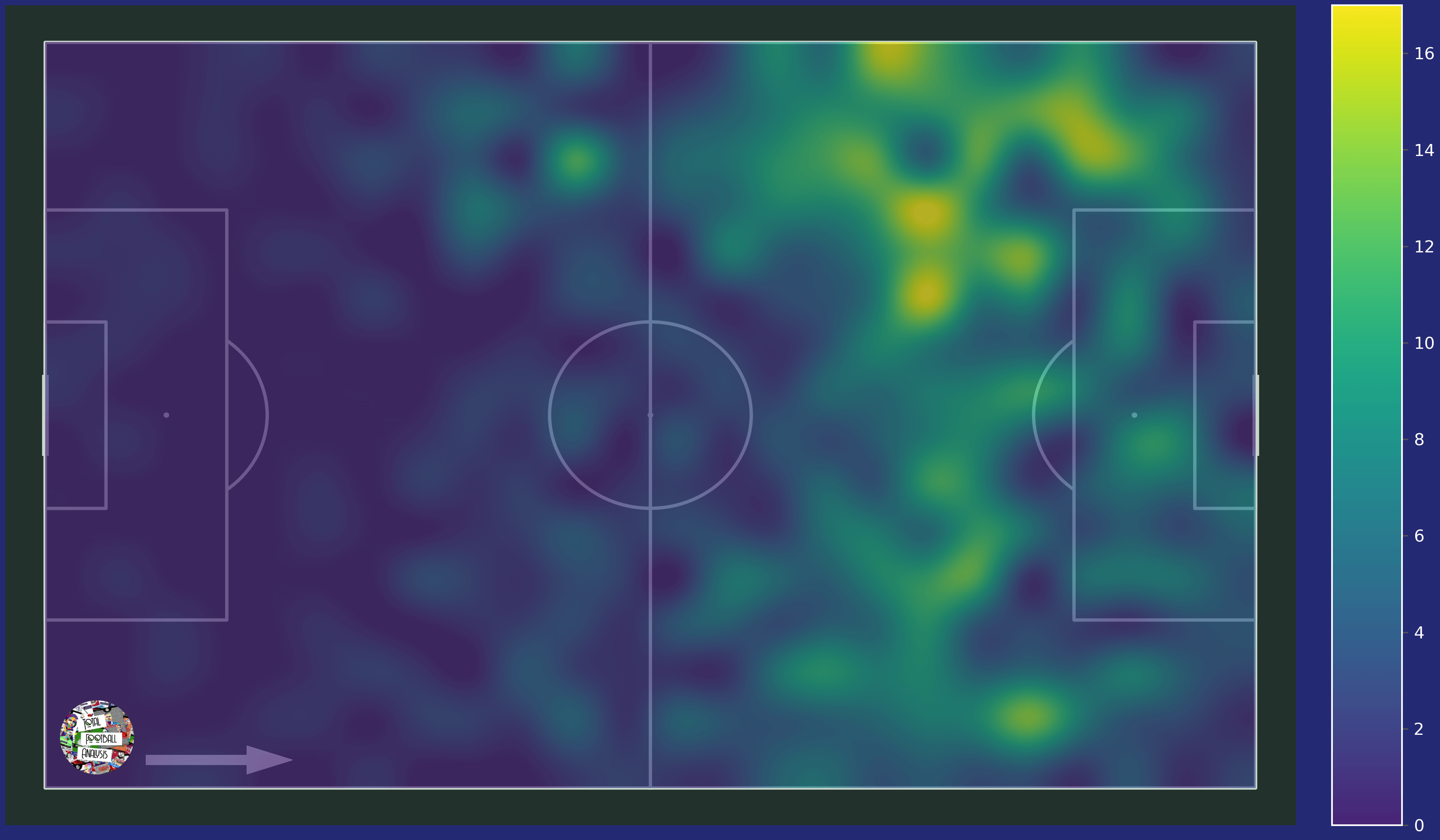
Now looking into the passes that Lang has attempted in the above image (end location of his passes)we can see that the end location of most of those passes is towards the central regions, especially around the left half-space. His most frequent combinations happen with his full-back and the central midfielder on that side. We mentioned how efficient he is at creating chances for his teammates. This can be seen as there is an active involvement across the penalty area. Though most of his passes occur and end at the left flank, lion share of his key passes have come from the right-half space with a lot of them having been cut-backs to his teammates and through passes from outside the box. This can be seen in the image below where the majority of them are from that region while we can also see some around zone-14 too. His key passes from the left side have mostly been simple outward passes to his teammate with very few cut-backs from his weaker foot.
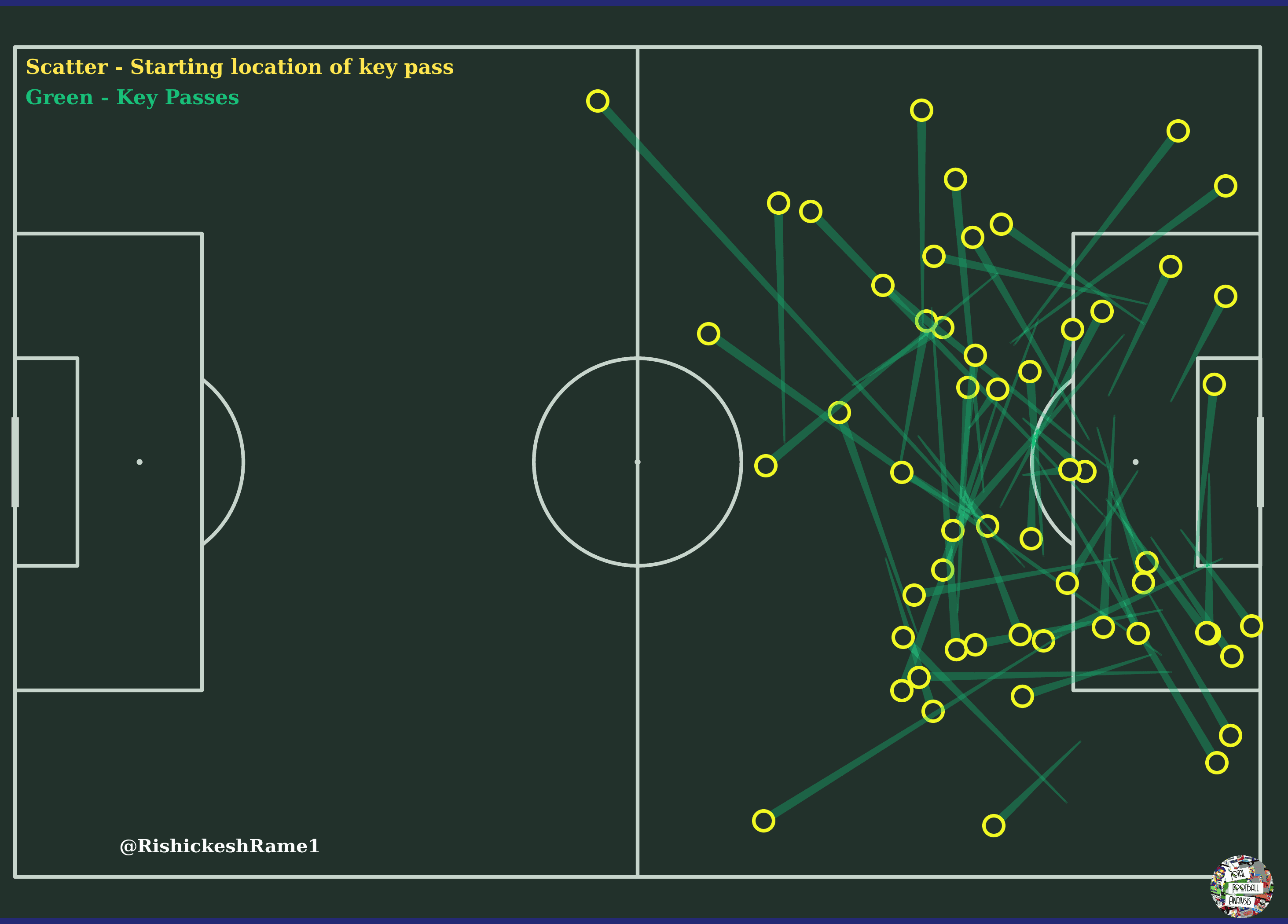
To conclude the data analysis, we can see that Lang is pretty much a versatile forward and also among the most direct and efficient ones. We can say that his style of play and the way he approaches the game might literally depend on where he has been deployed. If he plays on the left-flank, like every inverted winger he inclines himself to be more of a goal-scorer and takes a lot of shots while receiving the ball very deep and wide. Whereas as a right-winger, he displays his all-around game as he creates chances for his teammates and receives the ball in more danger zones.
How does he fare in the eye test?
Sometimes data can only tell us a part of the story and it is very important to back it with a good amount of eye-test and tactical analysis. We mentioned that he ranks very high among the forwards when it comes to creating chances for his team and playing key passes so let’s look into some examples of that.
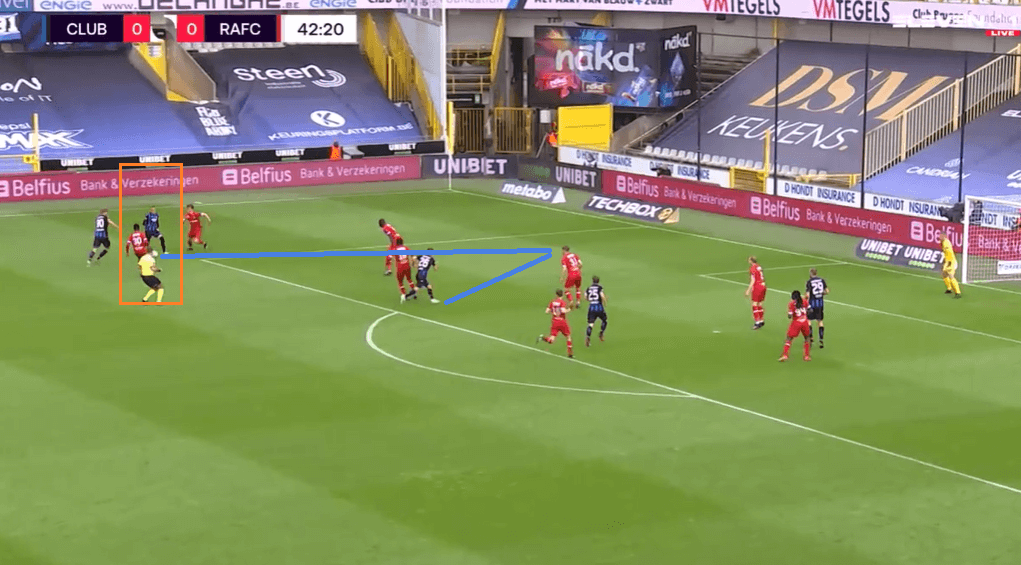
In the above example, he has the ball just outside the penalty area. Due to his gravity and also on the prospect of the full-back overlapping, the opposition’s defenders are attracted towards the ball and Lang. This allows his teammate to make a blindside run into space behind and Lang finds him with a well-executed through pass. This is something that he does very rarely when he has the ball in the left-wing but is very much capable of doing.
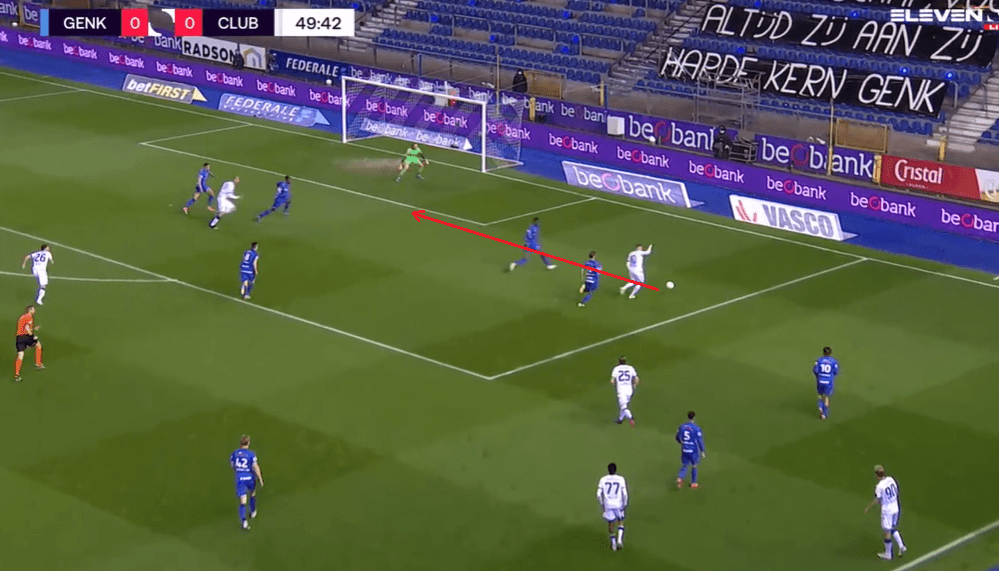
We saw how most of his key passes occurred in the right-wing, especially in the right half-space where he delivers cut-backs to his teammates from these regions. One such example can be seen in the image above where he plays a very good cut-back to his striker. His balance while executing these passes makes it very efficient for him as these are pretty much easily defendable.
His control in tight situations are very good and even when he receives a poorly weighted pass or receives a pass at wrong angles, he has good agility to immediately adjust his balance and with a very good first touch immediately. In the example below, he is in the wrong orientation as he faces his own goal when his teammate looks to play a through ball. He receives the ball with his weak foot and turns swiftly to carry the ball.
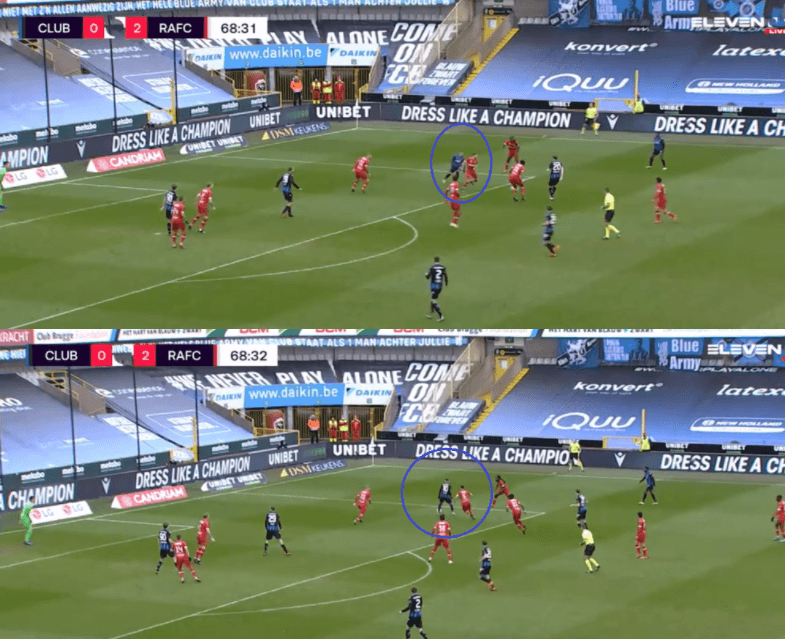
He is also statistically a high volume-dribbler who likes to take on defenders. Though his accuracy is not very high this is partially due to his inclination to dribble in unnecessary situations. Nevertheless, he has shown tremendous ability in 1v1 situations and beat his marker. We can see that in the image below, where he initially has the ball in the flank as the defender steps forward to defend against him. He immediately wrong-foots him by showing him the outside and dribbling inside.
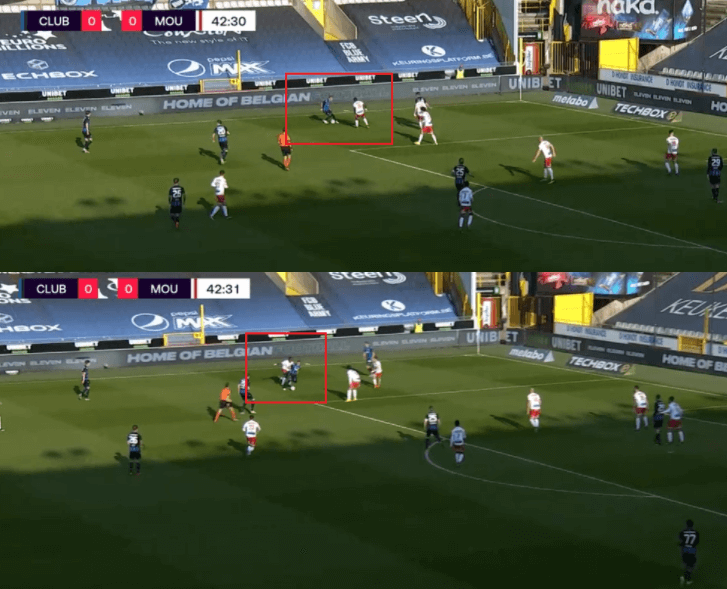
We mentioned before his ability to receive a lot of progressive passes from his teammates. He usually receives them after making a diagonal run into the spaces. Even if he doesn’t receive the ball he still makes such runs to move defenders away from their position to open spaces for his teammates. We can see an example of this in the image where he makes a diagonal run from the centre to the right flank and that initially drags the defender away towards him. Again his gravity is very key here and this is something that teams that have players like him can make good use of.
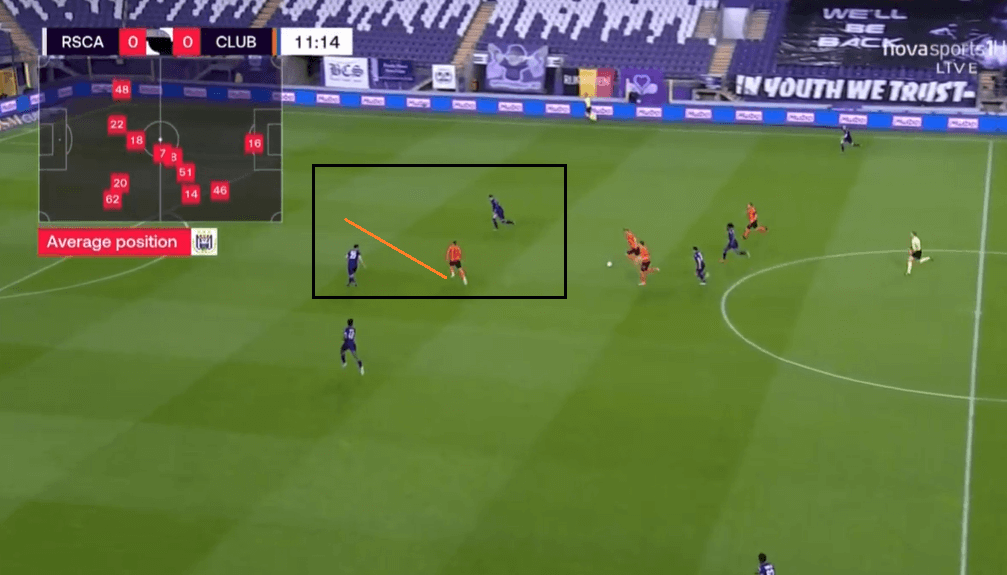
His ability in counter-attacks elevates his presence on the field as he has a very good pace that is very difficult for the defenders to match with them. We can in the image below where he starts his run behind the defender but reaches for the ball, played by his teammate, before the defender and holds it for a brief amount of time to wait for his teammates to arrive inside the box and play one of them for a goal.
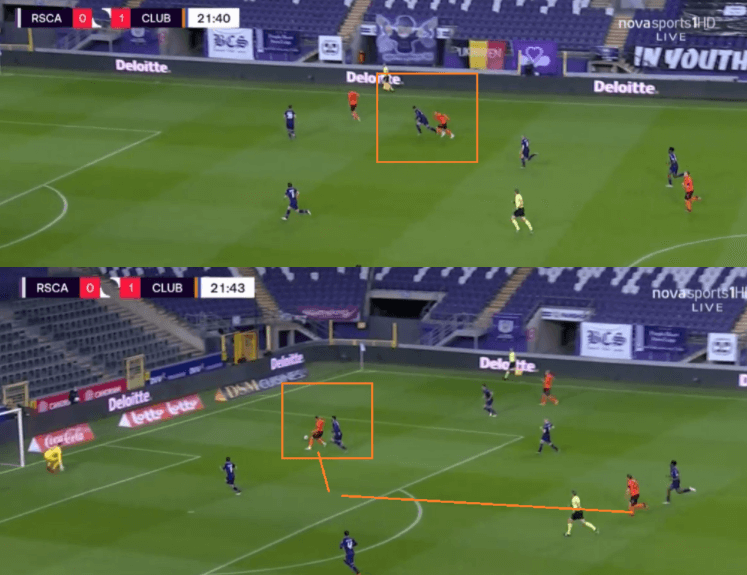
He has outperformed his xG by a good amount and has shown to be having a very good finishing ability that is required from a wide forward. Though he has taken comparatively very less shots from the right half of the penalty area, he has still scored 3 goals from those regions. We can see one of his goals below where he finishes by finding the right gap between the far post and the goalkeeper.
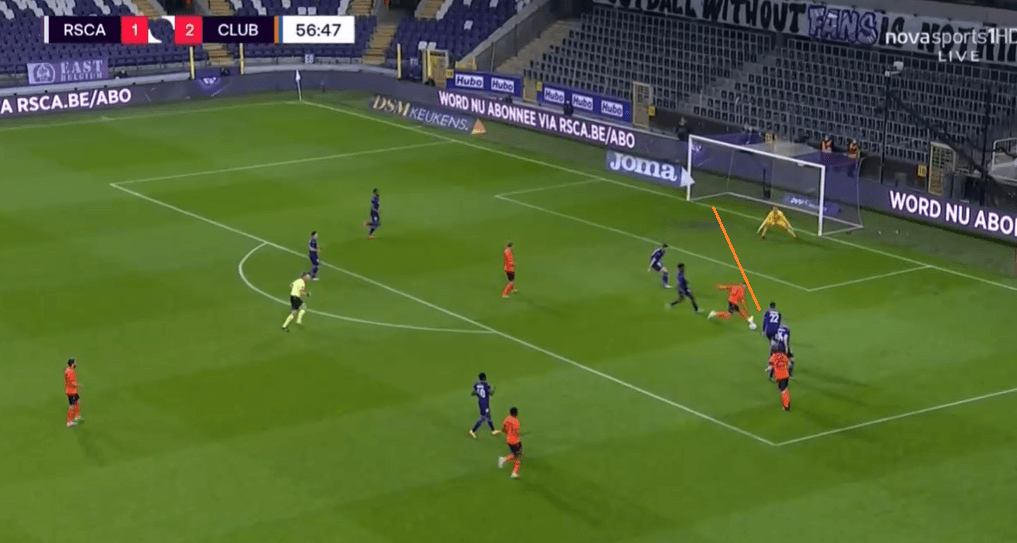
We have already discussed his tendency to cut inside and take a shot. Though he takes a lot of suboptimal shots from these situations, he has still found the back of the net after cutting inside and taking on a defender.
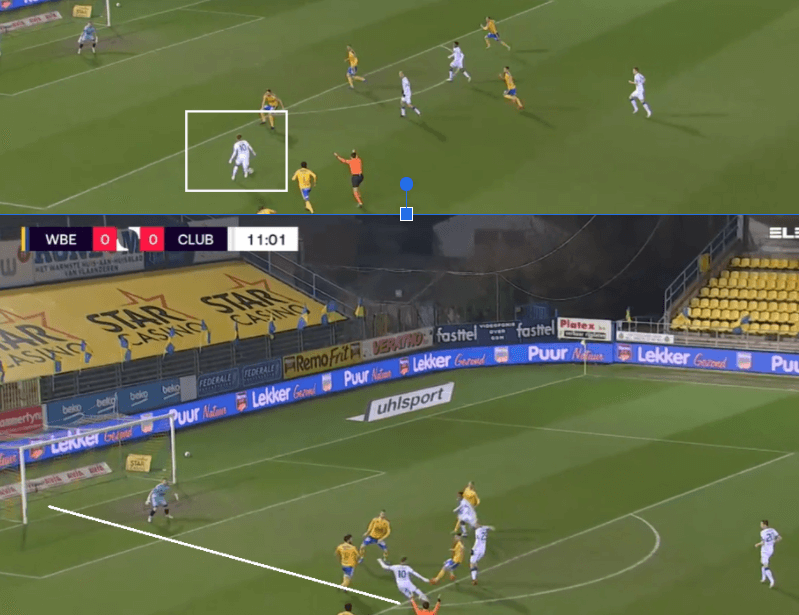
He also recognizes spaces well and makes good runs into spaces when his teammates have dragged defenders with them. In the shot-map that we saw, there were goals that were scored inside the 6-yard area. This was a result of his good movement to get into these zones and meet the ball. An example of this can be seen in the image below where he sees Club Brugge’s striker making a run to the near post and he makes a run into the space to score a goal after the defender left his position to follow the striker.
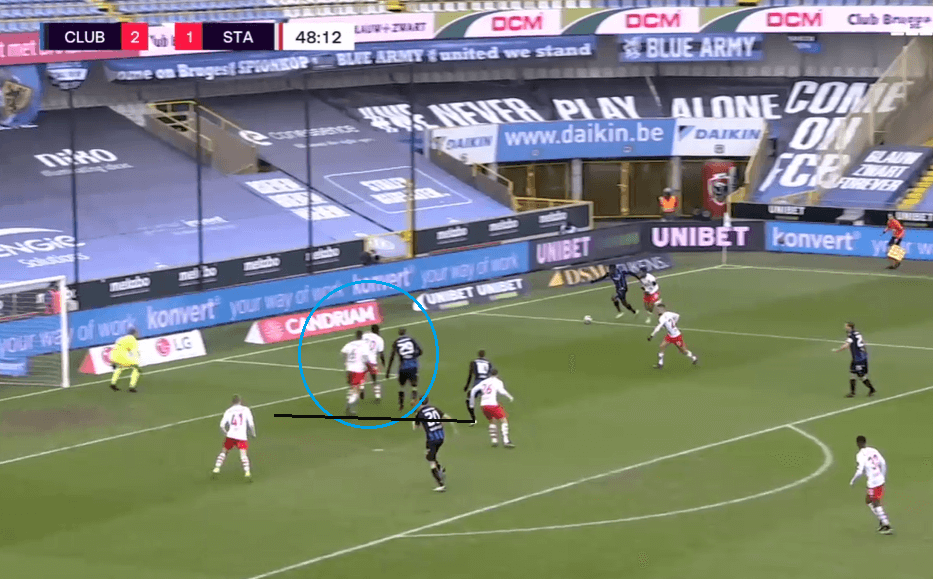
Final Remarks
Noa Lang is a talented young forward who seems to be another young jewel coming from the historic Ajax academy. With Ajax already having players like David Neres, Ryan Babel, etc already occupying or playing in the same role as Lang, he was forced to take a loan move. But it’s very safe to say that the loan move has been a tremendous success and a learning curve for the Dutch youngster as he is ready to make his mark at the Amsterdam club. If he can take his form a step further and impress in the Eredivisie, he could definitely seal a move to a top-5 league European club in the future.

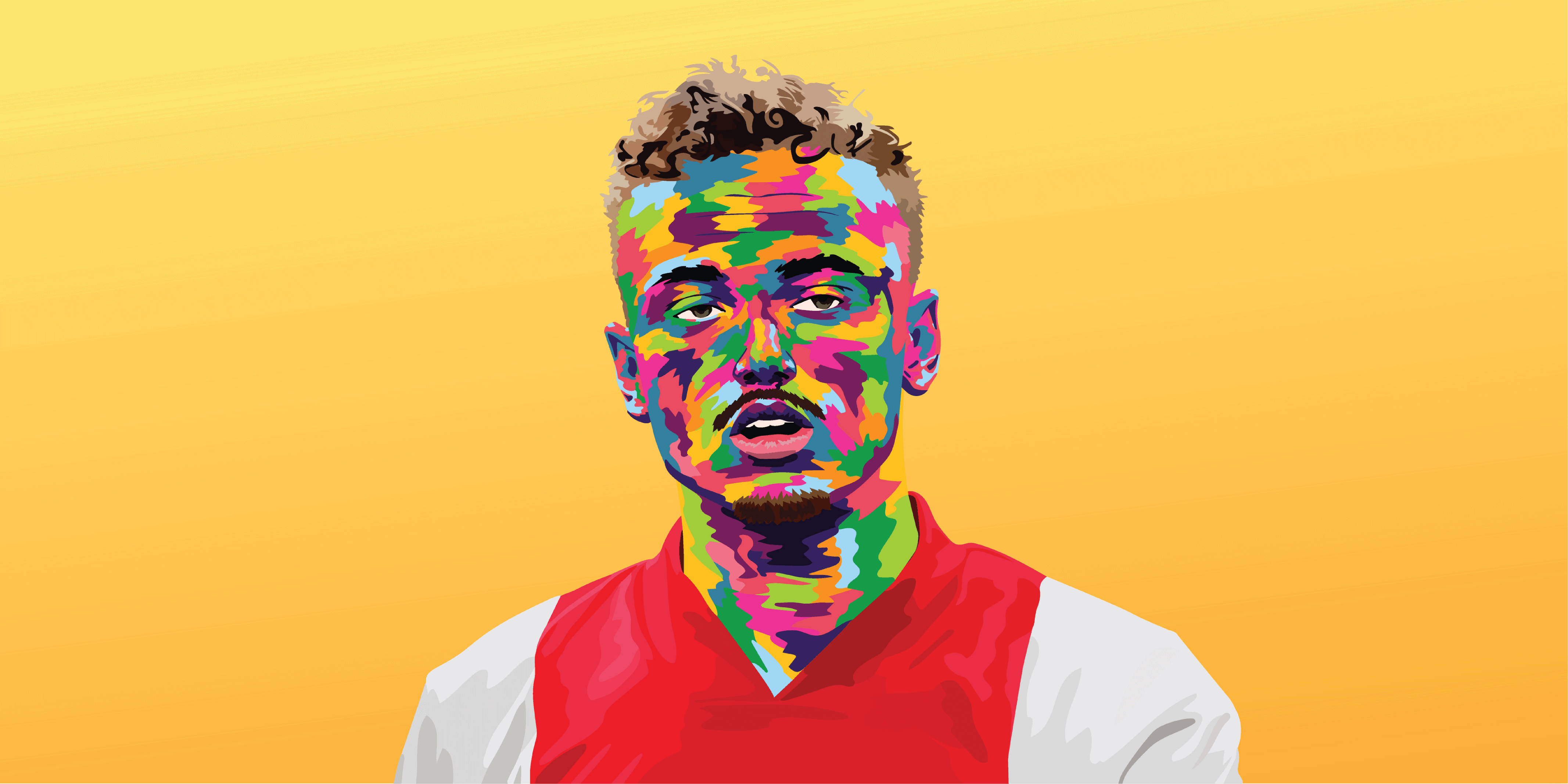




Comments